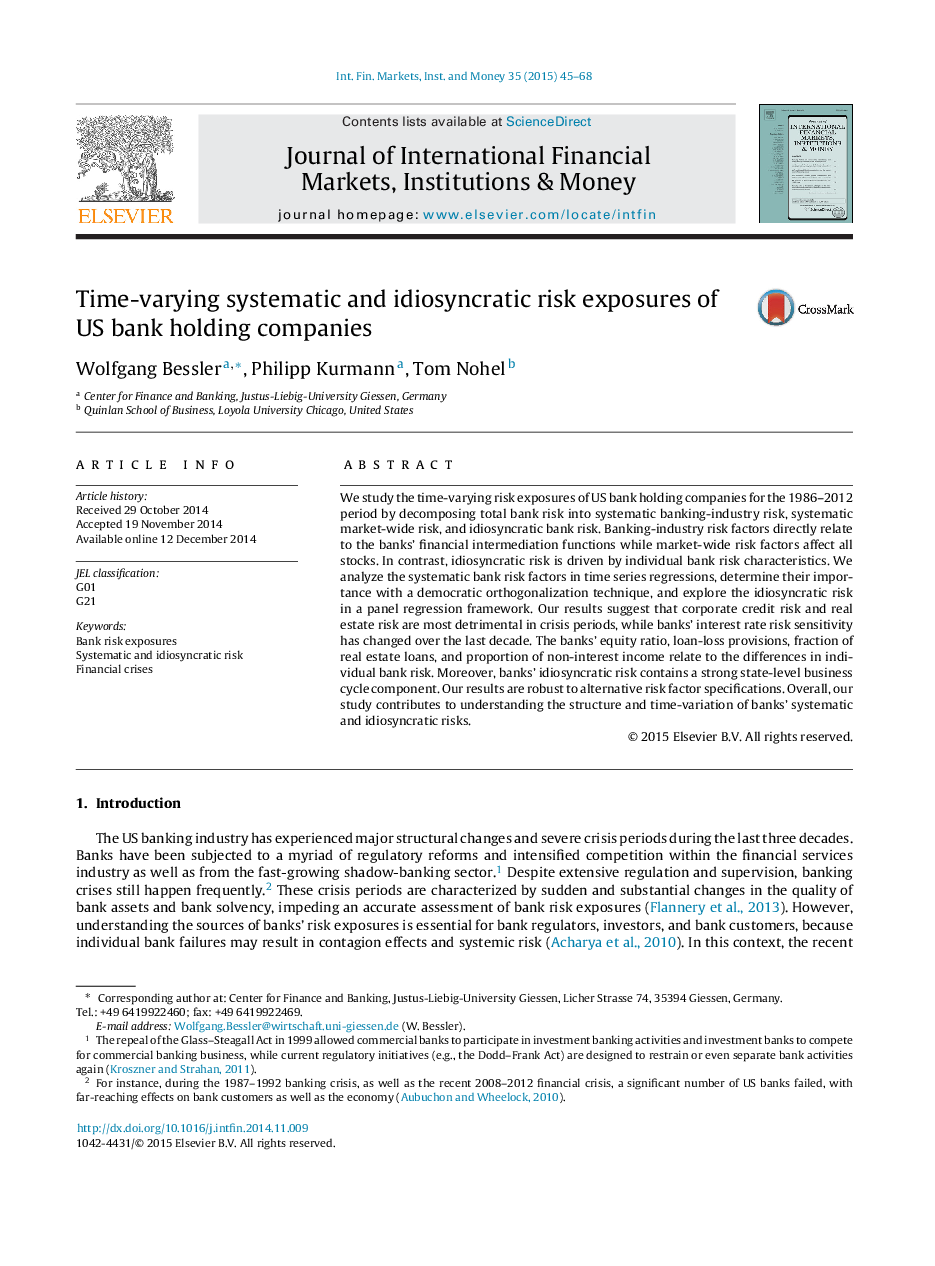| Article ID | Journal | Published Year | Pages | File Type |
|---|---|---|---|---|
| 963977 | Journal of International Financial Markets, Institutions and Money | 2015 | 24 Pages |
We study the time-varying risk exposures of US bank holding companies for the 1986–2012 period by decomposing total bank risk into systematic banking-industry risk, systematic market-wide risk, and idiosyncratic bank risk. Banking-industry risk factors directly relate to the banks’ financial intermediation functions while market-wide risk factors affect all stocks. In contrast, idiosyncratic risk is driven by individual bank risk characteristics. We analyze the systematic bank risk factors in time series regressions, determine their importance with a democratic orthogonalization technique, and explore the idiosyncratic risk in a panel regression framework. Our results suggest that corporate credit risk and real estate risk are most detrimental in crisis periods, while banks’ interest rate risk sensitivity has changed over the last decade. The banks’ equity ratio, loan-loss provisions, fraction of real estate loans, and proportion of non-interest income relate to the differences in individual bank risk. Moreover, banks’ idiosyncratic risk contains a strong state-level business cycle component. Our results are robust to alternative risk factor specifications. Overall, our study contributes to understanding the structure and time-variation of banks’ systematic and idiosyncratic risks.
